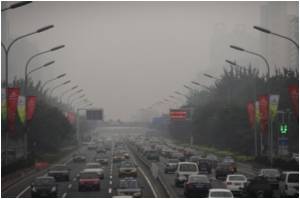A recent study has revealed the high pollution levels in a stuffy modern kitchen, which is much more than the pollution levels in a smog-filled city centre.

Sheffield University researchers compared three homes for the study, which they said was one of the first of its kind to focus on the risks of indoor pollution.
One was a stone-built detached house with an electric cooker in Hathersage, a village about 10 miles west of Sheffield in the Peak District National Park.
The other two properties were flats with gas cookers in Sheffield, one in the city centre and the other above a shop next to a busy road.
The scientists took air quality samples from outside and inside the homes over a four-week period.
Only very low traces of highly-toxic carbon monoxide were found in the kitchen of the rural house, but levels were much higher in the flats once the gas ovens were turned on.
The research focused on pollutants which pose the biggest risks to the elderly and people with respiratory or cardiovascular problems, including volatile organic compounds and solid particles small enough to penetrate into the lungs.
There are currently no set guidelines for safe levels of particles in the home.
"We spend 90 percent of our time indoors and work hard to make our homes warm, secure and comfortable, but we rarely think about the pollution we might be breathing in," the Telegraph quoted Professor Vida Sharifi, the study leader, as saying.
"Energy is just one source of indoor pollution, but it is a significant one. And as we make our homes more airtight to reduce heating costs, we are likely to be exposed to higher levels of indoor pollution, with potential impacts on our health.
"Concerns about air quality tend to focus on what we breathe in outdoors, but as we spend most of our time indoors, we need to understand more about air pollution in our homes.
"There is very little data on emission rates from different appliances or acceptable standards on indoor pollutants.
"Although ours was just a small study, it highlights the need for more research to determine the impact of changing housing and lifestyles on our indoor air quality," she added.
The study has been published in the Journal of Indoor and Built Environment.
Source-ANI
 MEDINDIA
MEDINDIA




 Email
Email




